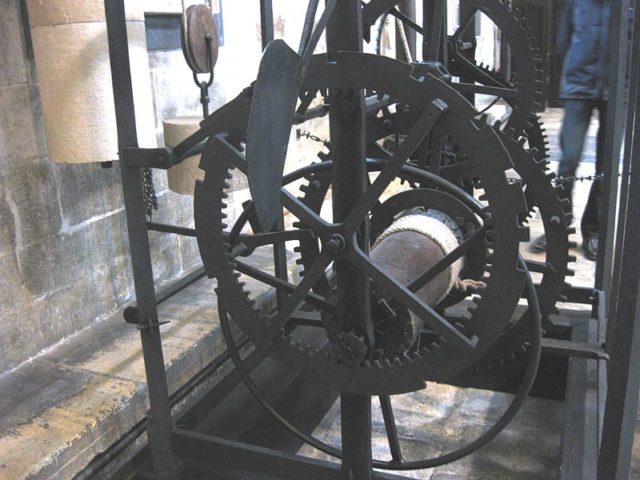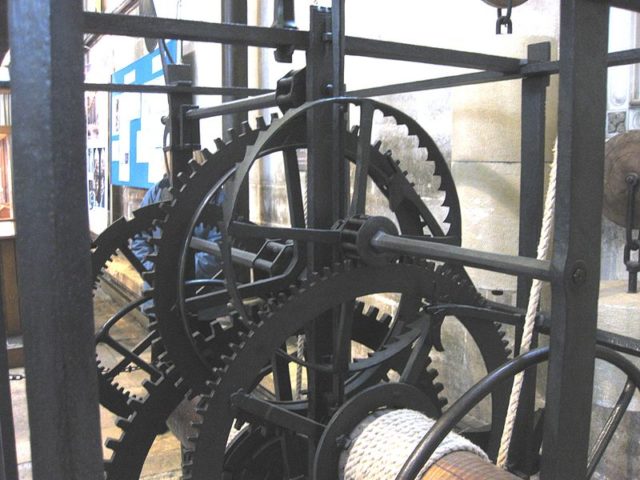It is still capable of generating the same noise it has produced for centuries, but the Salisbury Cathedral Clock, with its massive iron frame, doesn’t have the familiar face dial that other tower clocks have. 1386 is believed to be its date of origin, and if so, this would make the Salisbury Cathedral Clock the oldest working clock in the world.
A comparable clock located in the cathedral tower of Beauvais in France also claims to be the oldest working clock and is thought to date back to 1305. Italy, as well, has a challenger in the Chioggia clock tower; although its exact date of manufacture isn’t known, the Italians claim theirs to be among the oldest of clock towers.

The western sector of Britain has many examples of clocks from the 14th and 15th centuries. Determining the origin of the Salisbury Cathedral Clock was started by timepiece authority T.R. Robinson, and the effort has received support from others. The striking gear train is thought to contain all its original parts. The enormous wheel of the going train, the gear that moves the hands of the timepiece, is also considered to be original and first installed many centuries ago.
Although the Salisbury Cathedral Clock has most likely been performing its task since 1386, there is a reference of an even earlier timepiece that struck the hours as far back as 1306. However, historians theorize that the 1306 clock was an example of a water-propelled mechanical system. Historical references to these mechanical water clocks are found as early as 1280.
In 1928, the clock was re-discovered in the Salisbury Cathedral tower, where it had been abandoned. It was observed to have a pendulum that appeared to have been installed at a later date and is thought to have replacements instead of the original verge and foliot mechanism. Renovation work on the clock was completed in 1956 with a new verge and foliot apparatus installed. It is quite unlikely that these replacement parts look anything like the original; drawings of the original are not available for comparison. However, most of the parts are thought to be from the original design.

The conventional theory is that at the time the clock was first assembled, people were not as interested in precision timekeeping as we are today. They merely sought to know the hour, unlike our modern obsession with seconds and even microseconds. The clock performed accurately for the expectations of the time, and since it only struck on the hour, there was no need for the characteristic dial face.
Close to the end of the 17th century, the first significant alteration on the Salisbury Cathedral Clock was made, as the standard verge and foliot mechanism was replaced by a revolutionary new anchor and pendulum operating system. The anchor and pendulum system usually made clocks much more efficient by significantly increasing their accuracy. Additionally, a thorough examination of the Salisbury Cathedral Clock performed by Michael Maltin in the 1990s revealed that if the rope on the barrel was kept as a single layer, the clock could be accurate to within two minutes per day.

A new clock was installed in the Salisbury Cathedral in 1884. The original clock was transferred to the cathedral’s central tower after the old bell tower, cited in the deed document of 1386, was destroyed in 1790. The clock was tossed aside and abandoned. Following its re-discovery by T.R Robinson, the original finally gained the acknowledgment it rightfully deserved.
Robinson’s discovery of the first Salisbury Cathedral Clock was entirely accidental, as he had only climbed the tower to see the newly installed 1884 clock when he chanced across the much older relic.
